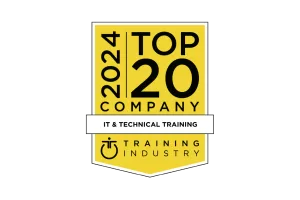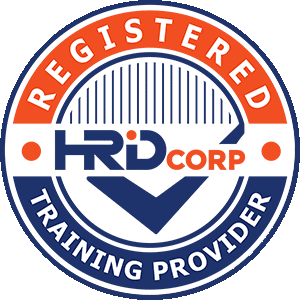Vue.js is among the world’s most popular language frameworks for applications and interface development. Its relative lightweight platform, ease of understanding, simple integration, and flexibility have given it huge support from developers and organizations such as Alibaba, Xiaomi and others.
-
This course exposes the experienced Integration Architect to Best Practice Architectural Principles for the webMethods Suite. The class starts with describing key Architectural framework principles to execution of the webMethods platform. Participants will learn and understand the webMethods Reference Architecture. The participant will also explore many key features and aspects of the webMethods ESB, BPMS, and Cache Management to deliver a highly-available and performant enterprise architecture.
-
This course will teach you and your team to use Xamarin. Forms to build fully native Android, iOS and Universal Windows Platform apps with Xamarin and C#. Xamarin. Forms exposes a complete cross-platform UI toolkit for .NET developers
-
Business architecture is an essential aspect of any organisation that aims to improve its operational efficiency, customer satisfaction, and profitability. It involves developing a comprehensive understanding of the organisation’s processes, capabilities, and people to identify and implement strategic improvements.
This course is designed to provide students with the knowledge and skills necessary to develop a robust business architecture that aligns with the organisation’s objectives.
-
This course is designed to provide the skills for basic implementation and customization of TCP/IP on z/OS
-
Certified Scrum Master(CSM) certification training from Scrum Alliance is a widely recognized Scrum certificate in the world. Designed to help the team coaches learn how to maximize the potential of the product development teams. Our 2-day CSM Training and classroom workshop delivered by an expert and Certified Scrum Trainer (CST) provides tested and practical techniques for data-based iterative product management within Scrum using videos, activities and exercises, that are conducted by expert trainers.
The Certified Scrum Master certification builds on your foundational scrum knowledge with enhanced implementation skills and helps distinguish yourself in the global marketplace and stand out as a member of the Scrum Alliance community.
-
Product owners have a unique and demanding role on agile teams. A product owner decides what the team will create next in order to deliver more value to the customer. In a Certified Scrum Product Owner (CSPO) class, you’ll learn the framework, principles, and values that make scrum work, plus key skills and tools you need to be effective.
You will discover how to juggle multiple stakeholders’ needs, get hands-on practice creating a product vision, and learn new ways to get to know your customers so that you can choose the right next piece of value to bring to market for them.
Participants in a CSPO offering should expect that each Learning Objective identified in this document will be covered. Students should also expect that the Scrum Foundations Learning Objectives are covered either before or during the offering.
-
The Perl Programming course is a comprehensive course that explains the Perl programming language, from basic through advanced syntax. This course is aimed at a wide range of job roles, including Programmers, System Administrators, Web Authors, and Operators. The course provides the fundamentals needed to use the Perl programming language to write quick yet powerful scripts for a range of purposes, as well as provides an overview of Common Gateway Interface Programming, Object-Oriented Perl and Perl Debugging.
The course is taught on the Oracle Solaris Operating Environment. However, the material is suitable for any operating system, including Linux, UNIX, and Windows.
Learn To:
- Describe the Perl Programming Language.
- Implement Scalars.
- List Control Structures.
- Implement Arrays.
- Describe Hashes.
- Implement Basic I/O and Regular Expressions.
- Describe Subroutines and Modules.
- Manipulate Files and Directories.
- Implement Perl.
Benefits To You
The Perl Programming course provides students with the fundamentals to create functional Perl scripts. The course introduces students to data structures, flow control mechanisms, regular expressions, and subroutines and modules in the form of example scripts and lab scripts. The course concludes with an overview of implementing Perl with regard to Common Gateway Interface (CGI) Programming, Object-Oriented Perl and Perl Debugging. This course however, does not cover the construct of the Perl Programming Language itself or complex Perl functions used for high-level programming. Rather, it focuses mainly on the implementation of the language to create simple and functional Perl scripts.
-
Learn how to harness the power of Apache Spark and powerful clusters running on the Azure Databricks platform to run large data engineering workloads in the cloud.
-
This course covers generative AI engineering on Azure Databricks, using Spark to explore, fine-tune, evaluate, and integrate advanced language models. It teaches how to implement techniques like retrieval-augmented generation (RAG) and multi-stage reasoning, as well as how to fine-tune large language models for specific tasks and evaluate their performance.
Students will also learn about responsible AI practices for deploying AI solutions and how to manage models in production using LLMOps (Large Language Model Operations) on Azure Databricks.
-
The ECSA is a security credential like no other! The ECSA course provides you with a real world hands-on penetration testing experience and is a globally accepted hacking and penetration testing class available that covers the testing of modern infrastructures, operating systems and application environments while teaching the students how to document and write a penetration testing report.
The ECSA program takes the tools and techniques you learned in the Certified Ethical Hacker course (CEH) and elevates your ability into full exploitation by teaching you how to apply the skills learned in CEH by utilizing EC-Council’s published penetration testing methodologies.
It is a highly interactive, comprehensive, standards-based and methodology intensive 5-day security training program 5-day which teaches information security professionals to conduct real life penetration tests.
This course is part of the Information Security Track of EC-Council. This is a “Professional” level course, with the Certified Ethical Hacker being the “Core” and the Licensed Penetration Tester being the “Master” level certification.
Explore more about cybersecurity certifications with our cybersecurity training and certifications guide.
-
This course is designed to teach you how to use z/OS Job Control Language (JCL) and selected z/OS utility programs in an online batch environment. Both Storage Management Subsystem (SMS) and non-SMS JCL are discussed. Machine lab exercises complement the lecture material.








